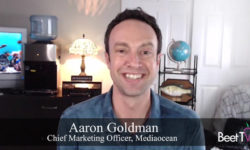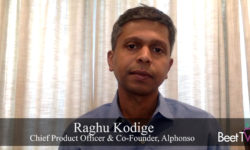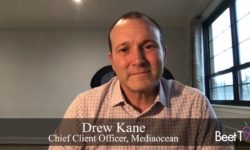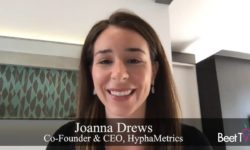VIA BEETCAM– Good information is hard to come by, and in the midst of a global crisis, companies across the media landscape are coming together to ensure that viewers are being presented facts. In a BeetCam chat, Ryanne Laredo, chief customer officer at Amobee, explains an initiative that has mobilized agencies, advertisers and other members of the media to collaborate to combat misinformation and support good journalism.
Weeks ago, even before the US had truly taken action, an engineer made a call to action at Amobee to see what the company could do about it as an intermediary between multiple corners of the media.
“We came up with a concept which is that we wanted to combat misinformation, starting in the U.S., that was out there regarding COVID-19 so that we could influence people to make the right decisions. With the right data, you can make the right decisions,” Laredo says.
Inspired by an article in AdExchanger by industry friend Joshua Lowcock about the need for the industry to come together during the current crisis, Laredo connected with Lowcock and the partnership spread outward from there.
“One thing that drove all of us is that we, as technology [companies], as agencies, as advertisers, as broadcasters, have a responsibility to the population and that is to combat misinformation as well as to continue to invest in information that is truthful and support journalism on that front,” Laredo says.
The goal that sprouted from there was to get in front of as many viewers as possible with accurate information. They kicked off the campaign by producing PSAs about getting factual information and targeted COVID content using Amobee’s brand intelligence tool. Within a week, they had agency partners, verification partners, publishers and SSP friends and more on board. Partners are UniversalMcCann, Publicis Media, Influential, OpenX, IAS, DoubleVerify, NewsGuard, eBay Advertising, AdColony, SpotX, Rubicon Project, True[X] and The Krim Group.
“We decided that we had to have a coalition because there were so many smart people,” Laredo says. “So many people who were aimed at making a difference and driving forward the truth that we had to take a pause and look at our strategy.”
The expansion has grown over the past few weeks. The coalition has served over 500 million impressions to 300 million individuals globally. Organizations involved, many of whom are competitors, have offered various ways to help.
Laredo also spoke about news consumption and brand safety. Most companies’ first response to the pandemic was to ask, “What does this do to my company and what does this do to my brand?” According to Laredo, this led to a careful balance of advertisers not wanting to appear to be taking advantage of an unfortunate situation but also looking out for the best interests of their employees and organization at large. In order to deal with this, Laredo said that organizations should be concerned with brand suitability over brand safety.
“Brand suitability really takes in brand values,” Laredo says. “And so things like news, where previously there may not have been a way to prevent you from sharing your brand on the same page as something about COVID-19, is that something that you really want to be avoiding as a brand safety measure versus something that has unsuitable content.”
As a result, there’s been a push to get advertising back on news, which is one of the goals of this coalition.
“We are continuing as an industry to support the journalism that is essential during times like these and on an ongoing basis.” Laredo says.














































